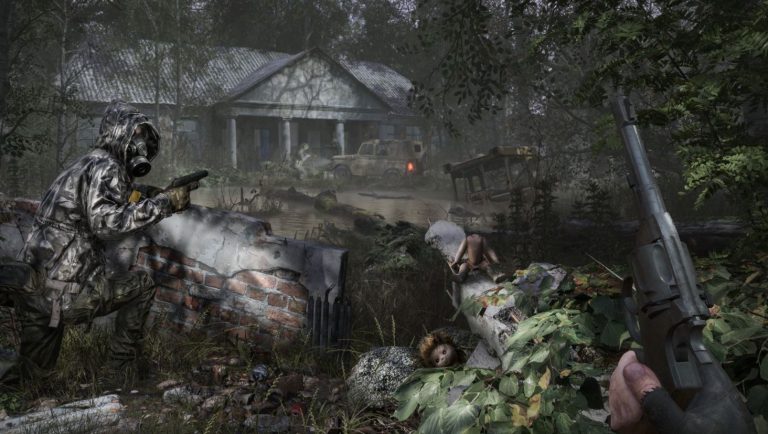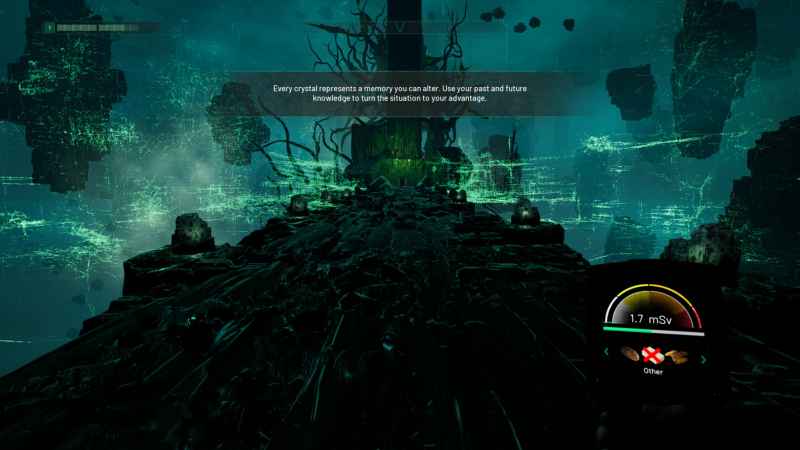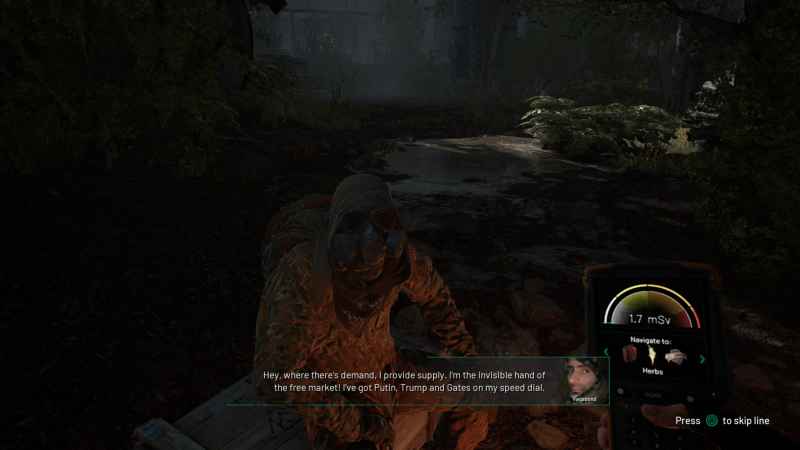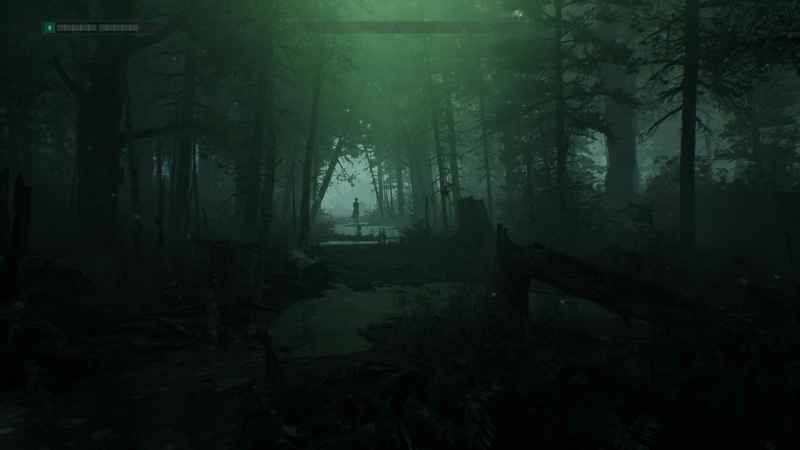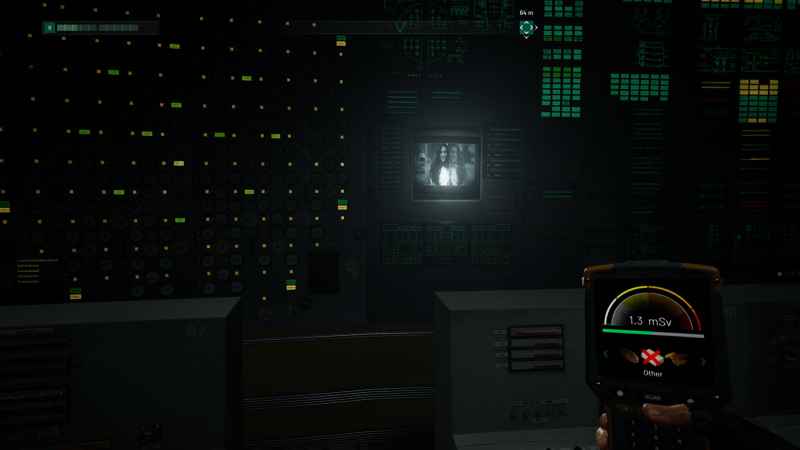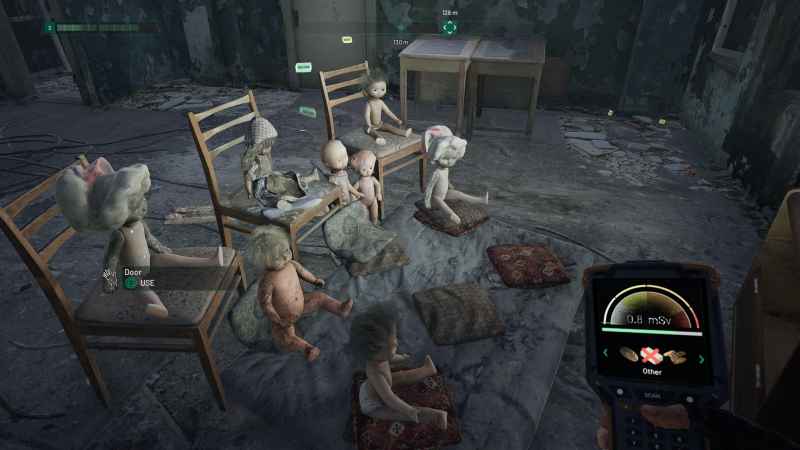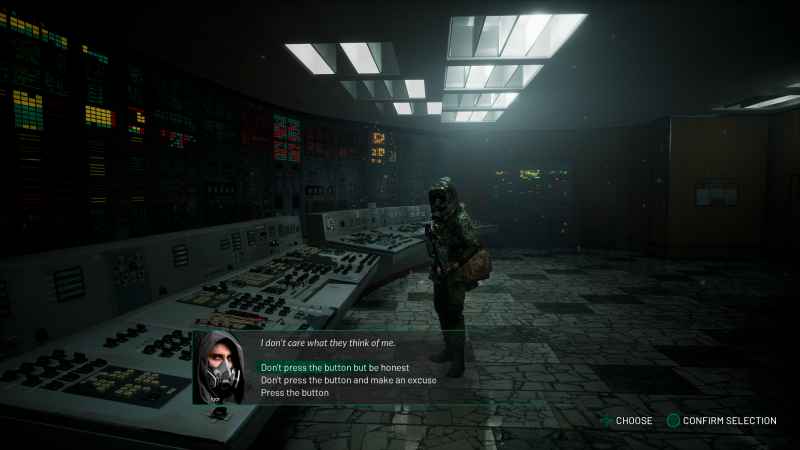Chernobylite PS4 Review – Ever since I was little, I was fascinated by what took place in Chernobyl; that odd kid in American middle school, researching why something so tragic could happen. Imagine my surprise to find out Chernobylite takes an approach to that famous locale by using horror. While most of the implemented ideas lack depth, the compilation of FPS-meets-base-building-meets-time-travel works well enough to create something worth the while.
Chernobylite PS4 Review – When Great Ideas Stumble Along The Way
Malleable Narrative
Igor Khymynuk once worked in the Chernobyl Nuclear Plant before the explosion, alongside his fiancée, Tatyana. Shortly before the explosion, Tatyana went missing, and Igor never found out how she disappeared or where she ended up. 30 years later, he receives a mysterious old picture of Tatyana, which spurs him to return to the Exclusion Zone in search of answers.
In a cavalcade of intriguing ideas, the story itself takes the cake in this game. Chernobylite practically coaxes you into trying different narrative outcomes, and many of them later in the game are doozies. Spattered throughout the game sit chunks of chernobylite, a hyper-reactive crystalline substance that formed as a result of the nuclear fallout, which allows you to access what I call a timeline portal.
After opening the time portal, you walk down a long hallway, lined with blocks of chernobylite that each represent a key decision point. You then choose to relive that moment and change your choice, thus altering the way your game played out. If you jumped from the end of the game back to the first couple missions where you destroyed a building instead of upgrading your equipment, the storyline adjusts to that result. While not a new idea, the execution and the choices you face make it feel special.
I can’t say that the entire narrative completely changes with each swapped decision, apart from the final choice, because the sought-after goal remains mostly concrete. At the same time, it makes the journey there feel much more unique and moldable. Putting together foresight and hindsight into one cohesive game just feels cool, rewarding you for making mistakes and trying new choices as you progress.
CQC, or Close-Quarters Collecting
Occasionally, you come across random people in the Exclusion Zone. While some can join your team, they more often than not act only as a quest mover or a vendor. At the same time, recruiting everyone can only benefit you. The skill points you obtain from dispatching enemies and exploring contribute to your development, but you need to interact with your recruits so they teach you your skills.
This makes for a rather cool leveling system. Instead of looking at menus and manipulating numbers, you interact with your allies and they teach you how to be more stealthy or have better accuracy or be more efficient at stealth takedowns. These little touches help to make leveling your character more integrated into the world you occupy.
Mechanically, Chernobylite works as it should with simplistic FPS controls and movement. In general, movement feels rather stiff when navigating, but the game offers a great peeking mechanic with R1 and L1. You can peek around corners while still moving. Most games I’ve come across require you to stop before peeking, so this acts as a welcome mechanic, even though it’s not that necessary.
Enter The Exclusion Zone
Clearly Chernobylite was developed by passionate people because the attention to environmental detail shows vividly. The team went out to Chernobyl’s actual Exclusion Zone and meticulously mapped it out to completely depict it in the game. While the general foliage doesn’t move at all, the trees have a beautiful movement to them that I don’t see in many games.
Your Geiger Counter works not only as a radiation detector but as a general scanner. You can even filter the scan to find specific types of resources, like food or fuel. I never used the specific searches, though, since all items tend to be rather spread out from each other. So I maximized my gathering by nabbing everything instead.
All Your Base
This brings me to another point: space without content. The dilapidated buildings offer up perfect places to search for survival goods as well as enhance the occasional narrative beat, but they generally lack much interaction or challenge apart from needing a lock pick here and there. An isolated enemy or two patrol random locations, but they don’t put up much of a fight.
While this leaves the game world rather empty, the way the game offers itself to you helps to counteract that emptiness. Instead of sneaking around, you can just run around and focus on gathering and developing your home base. You use these few supplies to craft items, equipment, fixtures, and crafting tables.
Think of base building in Fallout 4 but overly simplified. Instead of needing many different materials of all types, you instead only need flammable parts, mushrooms, electronic parts, chemicals, and herbs to craft everything in the game. This spread of craftables ranges from air filters to lamps to ammunition, but the options are far from diverse.
There’s not much depth here to this side of the game, and it only requires basic effort to create everything. At the same time, this continues to play into the game’s strategy of giving you things to do without getting in the way of the story they want to tell. The lack of depth benefits the story, but it doesn’t do the same for the gameplay.
Mission: Repetitious
While Chernobylite allows you to explore the Exclusion Zone, the map itself is not expansive. In fact, getting to the map requires you to send you or your allies on specific missions. Specifically, each day brings a new story-based mission, and the only reliable way to complete them is for you to do them personally.
These missions then send you out into the field, where most of the time the field is the same open zone you explored in previous missions. Ultimately, sending your allies on random missions benefits your entire crew because they bring back larger batches of resources and food needed to sustain your group. This helps to reduce your need to constantly seek out all resources on your missions, though I found myself constantly going after each nook and cranny for goodies to improve my base.
This repetitive side of the game makes me glad that Chernobylite doesn’t have the kind of depth I would have preferred in other circumstances. This does become bland rather quickly, but clearing through each mission only takes a few minutes, narrative beats included. This execution style isn’t ideal by any means, but the path of least resistance works as a kind of compensation for the limited time you need to do the extra things.
Lost Progress and Miscues
Apart from the mixed bag mentioned above, only a few sides of the game don’t sit well. The first comes in the form of glitches and performance issues. When moving between fixed linear sequences to the open world zones, frame rate drops from a smooth 60 to 30. This juxtaposes vividly and requires a good amount of time to acclimate to.
However, the worst issue comes with corrupted save data. While I spent the majority of my time on PS5, the PS4 version still suffers from corrupted save files. Every time I select “Reload Last Checkpoint,” the game crashes and a corrupted save data message pops up the moment I load up the game. I first learned this after playing five hours, and in a game that only goes for 20 or so, that’s a significant chunk of overall progress lost.
The last negative comes with the voice acting. The acting itself is okay, albeit a bit low-end, but everyone has British accents, even the Canadian companion, Olivier. In a Russian game with a Russian main character and a majority of the cast being Russian, it just feels disingenuous to disregard that level of authenticity. This holds especially true with how the creators put so much love and attention into the story and time manipulation.
The caveat here is that you can play the game entirely in Russian. After I lost my save data, I played this way. The vocal work has a different energy to it, and it feels far more appropriate to the events and characters. For those who hate subtitles, I wish that Chernobylite had had the time and resources to provide Russian voice actors for the English dub.
Great Ideas With Plenty of Baggage
Every once in a while, a cool project comes along and tells you a story that the creators truly wanted to get out there. Chernobylite is one of those games. Despite its issues, the worst of which can be patched out, Chernobylite takes a bunch of different ideas and does just enough of them to compliment its narrative instead of redirect your attention.
Review code kindly provided by publisher.
Chernobylite releases on PS4 September 28, 2021.
